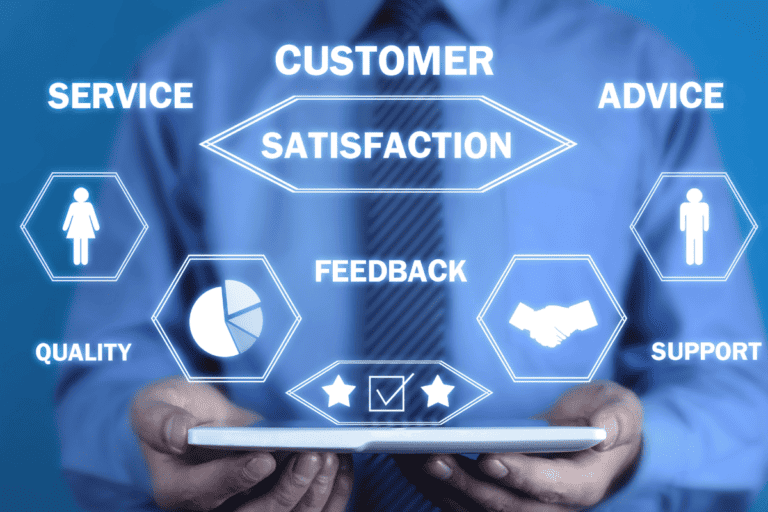Managing Work-Life Balance in a Digitally Connected World
In an increasingly digitally connected world, the boundaries between work and personal life have become blurred, posing significant challenges to maintaining a healthy work-life balance.
The pervasive nature of technology has revolutionized the way we work, communicate, and collaborate, but it has also made it more difficult to disconnect and recharge.
As professionals navigate this complex landscape, it is essential to explore effective strategies for managing the competing demands of work and personal life.
With a focus on practical solutions and mindful practices, this discussion aims to provide valuable insights into achieving a sustainable work-life balance in the digital age.
Key Takeaways
- Constant accessibility and interconnectedness blur the lines between work and personal life.
- Setting boundaries and priorities is essential to maintain a healthy work-life balance.
- Time management strategies such as effective delegation, task prioritization, time blocking, and goal setting can help in managing work-life balance.
- Avoiding multitasking and focusing on one task at a time can improve productivity and concentration.
Impact of Digital Connectivity
In today's digitally connected world, the constant accessibility and interconnectedness enabled by technology have significantly impacted work-life balance. The pervasive nature of digital connectivity has blurred the lines between professional and personal life, leading to an 'always-on' culture. This has resulted in a growing need for digital detox and unplugging, as individuals seek to create boundaries to maintain a healthy balance.
The impact of digital connectivity on mental health is a growing concern. The pressure to constantly stay connected and responsive can lead to increased stress, anxiety, and burnout. Furthermore, excessive screen time and digital overload have been linked to a decline in overall well-being. Individuals may find it challenging to disconnect from work-related communications, affecting their ability to unwind and recharge outside of working hours.
Moreover, the extensive use of digital communication has altered social connections. While technology has facilitated global connections, it has also led to a decrease in face-to-face interactions and genuine human connections. The importance of cultivating meaningful relationships offline is often overshadowed by the convenience of online communication.
Setting Boundaries and Priorities
The pervasive nature of digital connectivity has necessitated a deliberate focus on setting boundaries and priorities to navigate the challenges of maintaining a healthy work-life balance in today's interconnected world. Boundary setting involves establishing clear limits on the intrusion of work into personal time and space. This may include defining specific work hours, designating technology-free zones at home, and communicating availability expectations to colleagues and supervisors. On the other hand, priority management entails identifying and focusing on the most critical tasks and responsibilities to ensure that essential personal and professional commitments are met. This may involve using time management techniques, such as the Eisenhower Matrix, to categorize tasks based on urgency and importance.
| Boundary Setting | Priority Management |
|---|---|
| Establish work hours | Identify critical tasks |
| Designate technology-free zones | Use time management techniques |
| Communicate availability expectations | Prioritize based on urgency and importance |
| Set clear personal time boundaries | Focus on essential commitments |
Time Management Strategies
In the quest for work-life balance, effective time management strategies are crucial. Prioritizing tasks, setting boundaries for work, and avoiding multitasking pitfalls are key components of successful time management.
Prioritizing Tasks Effectively
Effectively prioritizing tasks is essential for maintaining productivity and achieving a healthy work-life balance in today's digitally connected world. This involves effective delegation, task prioritization, time blocking, and goal setting. A combination of these strategies can significantly enhance one's ability to manage their workload efficiently. The table below outlines these strategies and their benefits:
| Strategies | Description | Benefits |
|---|---|---|
| Effective Delegation | Assigning appropriate tasks to others based on their skills and availability | Reduces workload and fosters teamwork |
| Task Prioritization | Identifying and focusing on the most important tasks | Enhances productivity and time management |
| Time Blocking | Allocating specific time slots for different tasks | Minimizes distractions and improves focus |
| Goal Setting | Defining clear objectives to work towards | Provides direction and motivation |
Setting Boundaries for Work
Implementing clear boundaries for work is crucial for maintaining a healthy work-life balance and maximizing productivity in today's digitally connected world. Setting work boundaries allows individuals to prioritize personal commitments and avoid burnout.
Here are essential strategies for setting boundaries:
- Establish Clear Work Hours: Define specific work hours and adhere to them to create a clear distinction between work time and personal time.
- Communicate Expectations: Clearly communicate your availability to colleagues and clients, setting expectations for when you can be reached.
- Designate Work-Free Zones: Create designated areas in your home where work-related activities are not allowed, promoting a separation between work and personal life.
Avoiding Multitasking Pitfalls
To enhance time management and productivity, it is essential to adopt focused task prioritization rather than succumbing to the pitfalls of multitasking.
Avoiding distractions and implementing single-tasking techniques are crucial for maintaining high productivity levels. Multitasking can lead to decreased efficiency and an increase in errors due to divided attention. Instead, individuals should prioritize tasks based on urgency and importance, focusing on one task at a time. This approach allows for better concentration and quality output.
Additionally, setting specific time slots for checking emails and messages can help minimize interruptions during focused work periods. By incorporating these strategies, individuals can avoid the multitasking pitfalls and improve their overall productivity and work-life balance.
Self-Care Practices
As we navigate the demands of a digitally connected world, prioritizing self-care practices has become increasingly crucial.
Mindful breathing exercises, daily physical activity, and healthy sleep habits are essential components of maintaining a balanced and healthy lifestyle.
These practices not only contribute to our overall well-being but also play a pivotal role in managing stress and enhancing productivity.
Mindful Breathing Exercises
Practicing mindful breathing exercises can significantly contribute to maintaining a healthy work-life balance in today's digitally connected world.
Deep breathing and relaxation techniques help alleviate the physical symptoms of stress, allowing individuals to approach their work and personal life with a clearer mindset.
Mindfulness, a key component of mindful breathing, enables individuals to be fully present in the moment, reducing anxiety and improving overall well-being.
This practice fosters stress reduction by promoting a sense of calm and inner peace, which is essential for navigating the demands of a fast-paced, technology-driven environment.
Daily Physical Activity
Engaging in regular physical activity is an essential component of self-care practices that contribute to maintaining a healthy work-life balance in today's digitally connected world.
Outdoor exercise and fitness routines play a crucial role in combating the sedentary nature of many modern jobs. Incorporating daily physical activity into your routine can enhance overall well-being, reduce stress, and improve cognitive function, ultimately increasing productivity and satisfaction in both professional and personal spheres.
Whether it's a brisk walk during a lunch break, a morning yoga session, or a post-work gym visit, finding time for physical activity is paramount. It's important to prioritize activities that align with personal interests and goals to ensure consistency.
Healthy Sleep Habits
Prioritizing healthy sleep habits is integral to maintaining a balanced and sustainable approach to self-care in the modern digital landscape. To achieve optimal sleep, individuals should pay attention to their sleep environment, ensuring it is conducive to relaxation. This may involve reducing noise and light, as well as maintaining a comfortable temperature.
Additionally, establishing a consistent sleep schedule and bedtime routine can signal to the body that it is time to wind down. This could involve engaging in relaxation techniques such as deep breathing or meditation to prepare the mind and body for sleep.
Balancing Remote Work and Personal Life
Achieving a healthy balance between remote work and personal life is essential in today's digitally connected world. Remote work presents unique challenges, such as blurred boundaries between professional and personal life. It's crucial to establish clear personal boundaries to effectively manage these challenges.
One significant challenge of remote work is the difficulty in disconnecting from work tasks, leading to an 'always-on' mentality that can encroach on personal time. To address this, individuals should define specific work hours and create a dedicated workspace within their homes. Establishing clear boundaries between work and personal life helps in maintaining a sense of normalcy and structure.
Additionally, remote work can sometimes lead to feelings of isolation due to reduced face-to-face interactions. To combat this, individuals should proactively schedule time for social activities and maintain a healthy work-life balance.
Setting aside designated time for personal pursuits, hobbies, and relaxation is equally important. By recognizing and addressing these remote work challenges and establishing personal boundaries, individuals can effectively balance their professional responsibilities with their personal lives.
Communication and Collaboration Tools
In adapting to the challenges of remote work and maintaining a healthy work-life balance, the effective utilization of communication and collaboration tools becomes integral to fostering productivity and connectivity in a digitally connected world. These tools are essential for facilitating seamless remote collaboration and virtual meetings.
- Real-time Communication: Instant messaging platforms and video conferencing tools enable real-time communication, allowing team members to connect, share ideas, and collaborate irrespective of their physical locations. This fosters a sense of togetherness and ensures that work progresses smoothly.
- Document Sharing and Collaboration: Cloud-based platforms for sharing and collaborating on documents in real-time are pivotal for remote teams. These tools enable team members to work on the same document simultaneously, providing visibility and transparency into project progress.
- Project Management Software: Utilizing project management tools allows teams to organize tasks, track progress, and delegate responsibilities efficiently. Such platforms help in coordinating efforts, enhancing teamwork, and maintaining accountability even in a virtual work environment.
The effective use of these communication and collaboration tools not only facilitates efficient remote work but also plays a crucial role in maintaining a healthy work-life balance.
Nurturing Relationships and Connections
Fostering meaningful connections and nurturing professional relationships is essential for building a supportive and cohesive remote work environment. In a digitally connected world, it is vital to prioritize building connections and fostering relationships to maintain a sense of community and support.
Balancing social and professional engagements is crucial for employees to feel connected and engaged, despite the physical distance. This can be achieved through regular virtual team-building activities, informal virtual coffee breaks, and utilizing digital platforms to create opportunities for casual interactions.
Additionally, providing avenues for employees to share personal experiences, achievements, and challenges can foster a deeper sense of connection and understanding within the remote work environment. Encouraging open communication and active listening also plays a pivotal role in nurturing relationships and connections.
Conclusion
In conclusion, the interconnectedness of the digital world has significantly impacted the work-life balance. Setting boundaries and priorities, implementing time management strategies, practicing self-care, and nurturing relationships are crucial in navigating this digitally connected environment.
It is important to find a balance between remote work and personal life, utilizing communication and collaboration tools effectively. By prioritizing these aspects, individuals can achieve a harmonious equilibrium between their professional and personal lives in the modern digital era.







